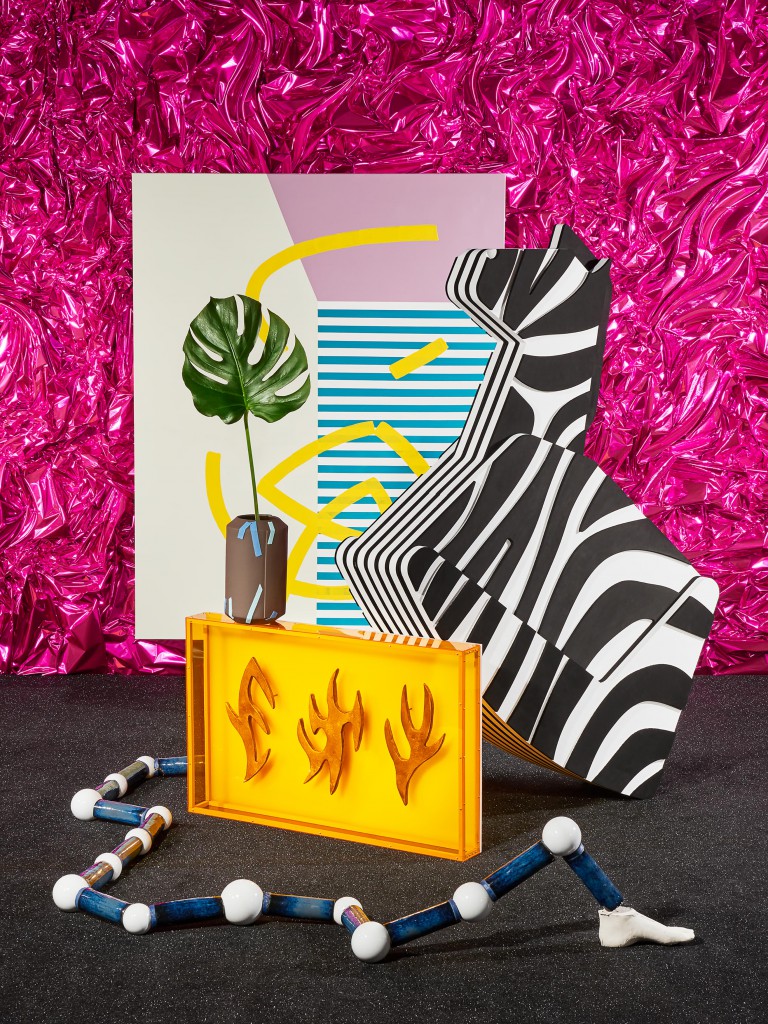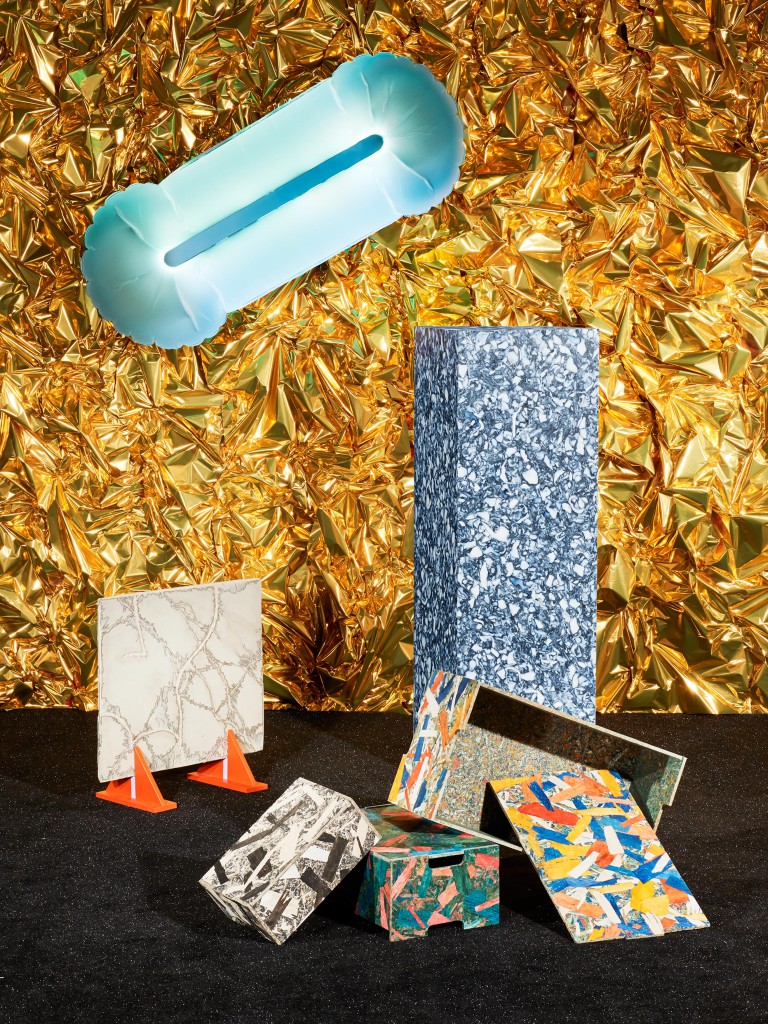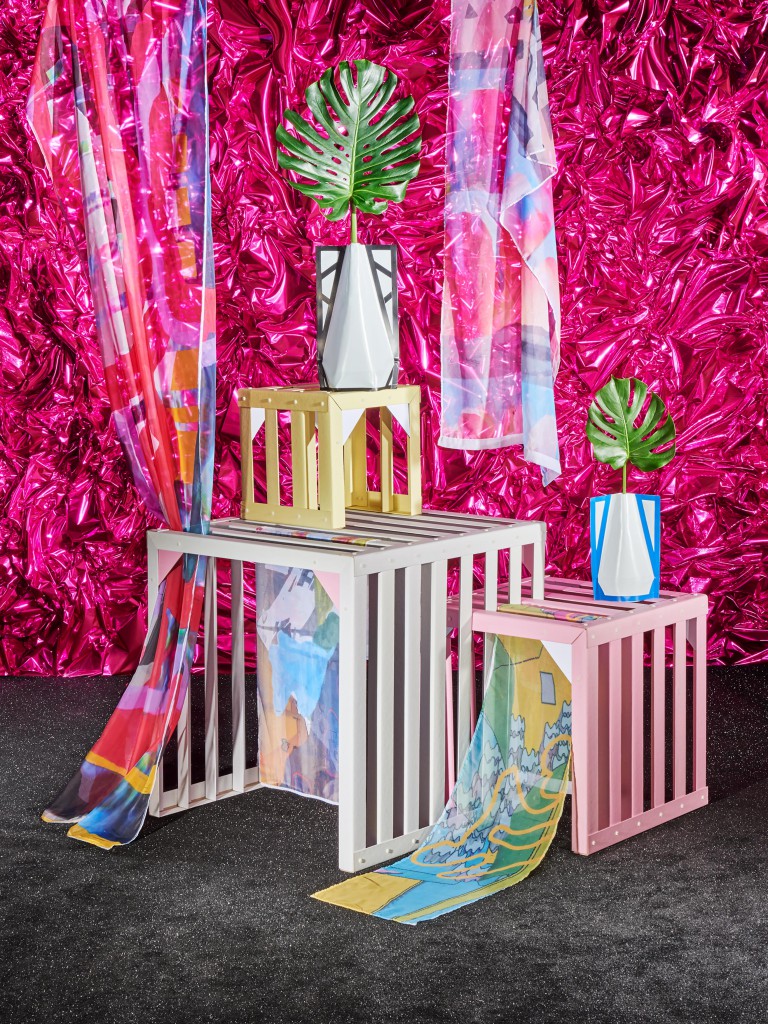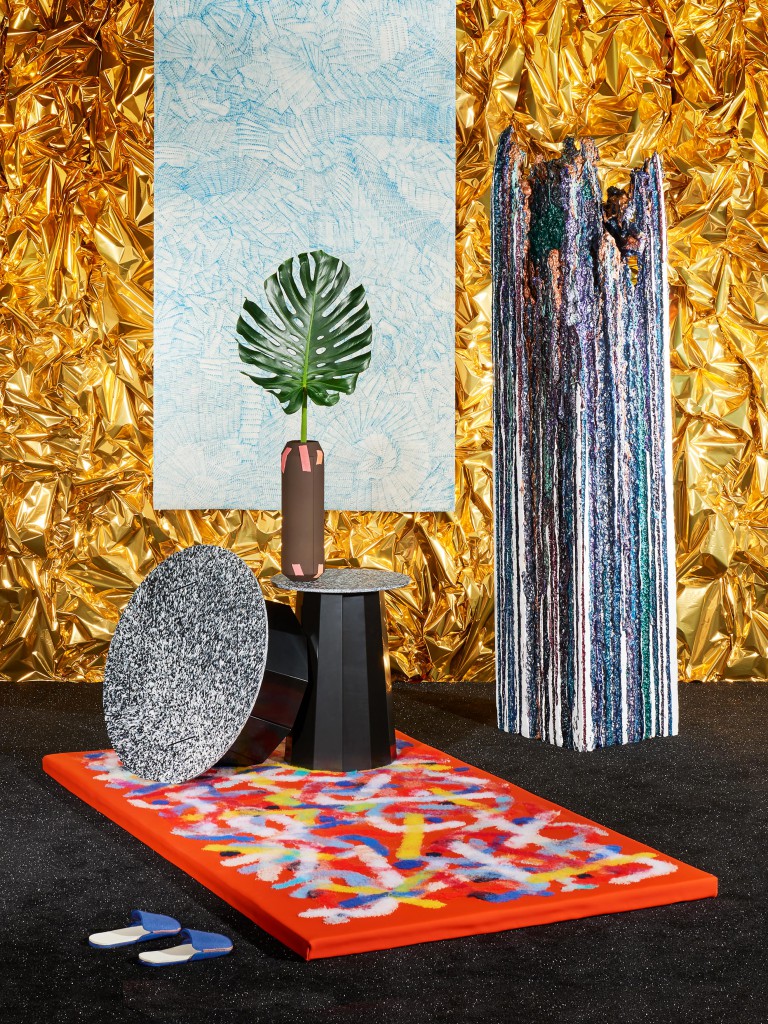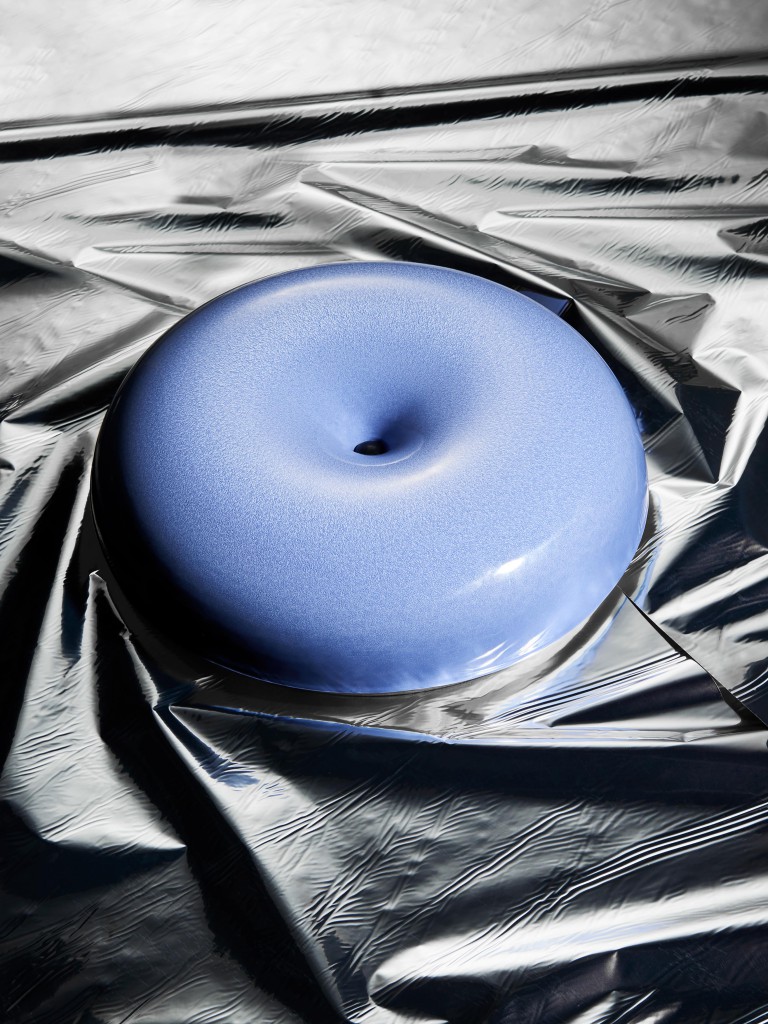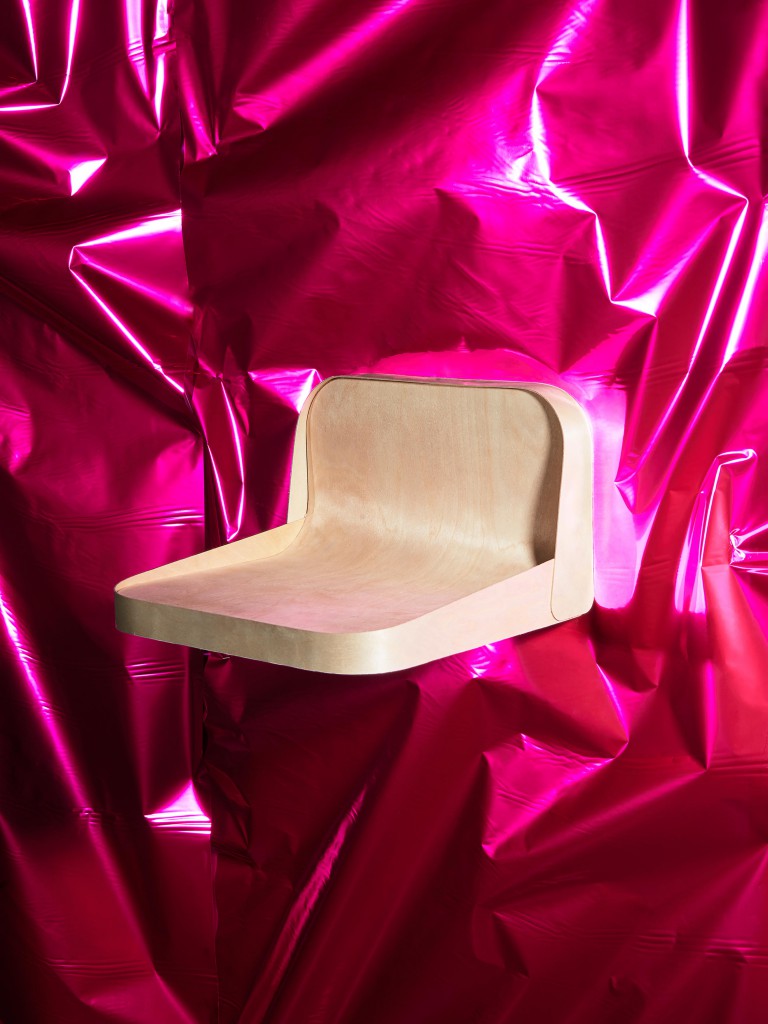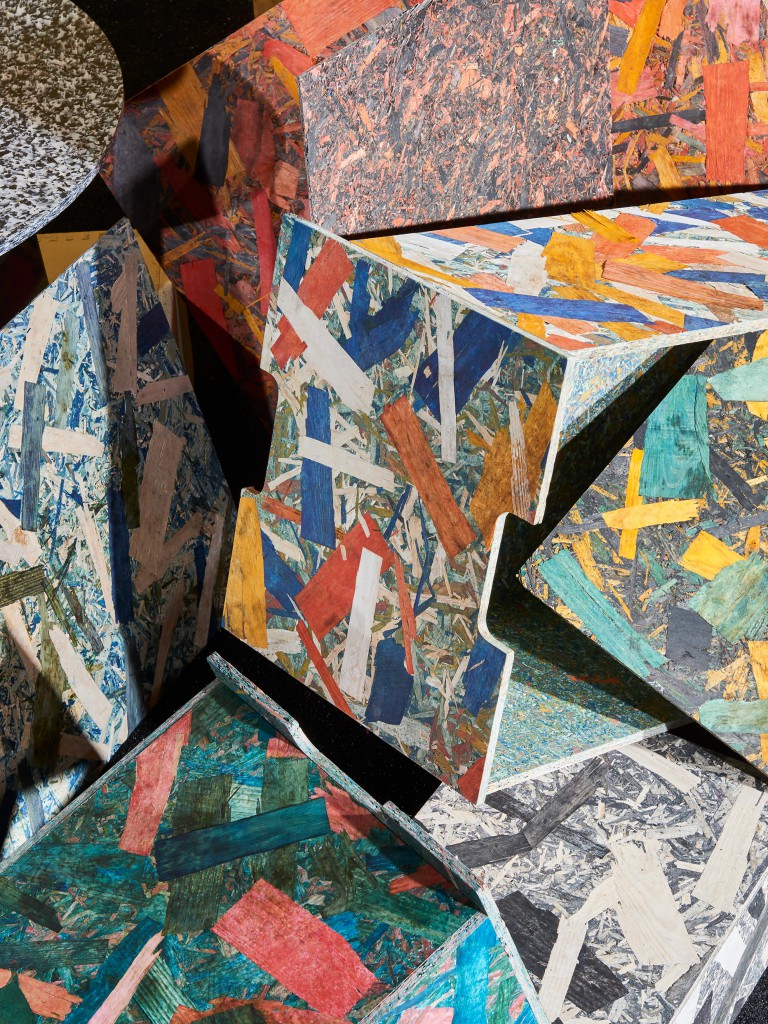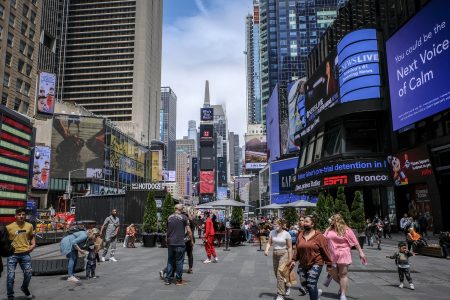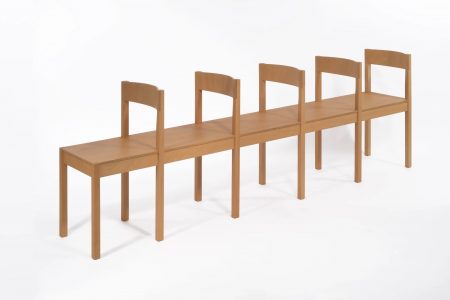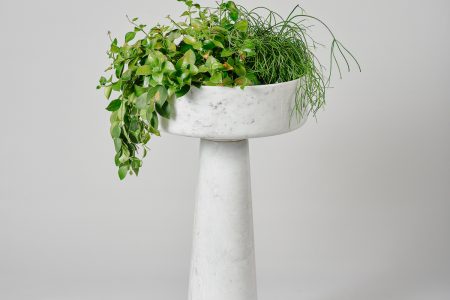Ecal: More Rules for Modern Life
Among a series of projects exhibited throughout town during Milan Design Week, Ecal (University of Art and Design Lausanne, Switzerland) returned to its Brera outpost Spazio Orso 16, where it mounted More Rules for Modern Life (4-9 April). Curated by multifaceted Swiss performance artists John M Armleder, the showcase brought together students from the hallowed school’s Industrial Design and Fine Arts departments. Challenging categorical definitions of practice, collaboration between different types of creatives and their toolsets became key; in turn, asking key questions about the very nature of Milan Design Week.
What is furniture design and what are objects of art? How can one influence or borrow from the other? Clearly, such questions have existed at least since the days of Radical Italian Design. Still, the dilemma remains relevant for practitioners and users alike. Even with the resurgence of minimalism, a strong push back towards experimental craft – evident throughout culturally-driven presentations in Milan this year – has poured fuel on this fire of this timeless debate. Bachelor students from both departments were matched up to create a series of transcendent works in a variety of colours, material combinations and scales; a rich plethora of texture, form and experimentation. Students also revealed how they could cleverly twist the fundamentals of function; championing the intellectual and theoretical underpinnings of art.
Singular entities containing contrast and contradiction were reflexively echoed in the goal of this semester-long initiative. In some instances, furniture took on a far more conspicuous cultural role, as was the case with Jérémy Aberlé and Loris Gomboso’s Cardboard nesting tables. In others, objects held emotional and historical value, if not already prescribed symbolic references; Euka by Kelly Tissot or Fondo by Amélie Demay. Still some projects investigated how the home could be perceived as a showcase in of itself. Zig-Zag by Nathan Gramage is a Zebra-styled rocking horse. Clad in candied hues of iridescence foil, the exhibition played host to a series of almost exaggerated yet honest conceptual statements – something other education institutions have perhaps allowed their students to dapple in – while still suggesting new architectonic and material qualities. Camo by Julien Chaintreau and François Ménès employs Dyed OSB panels to form storage boxes while Flo by Laurie Greco uses PVC plastic to cast new vessels. It’s through such radical postulations, that one can truly step back from the everyday and pose critical questions that only then inspire real change.
